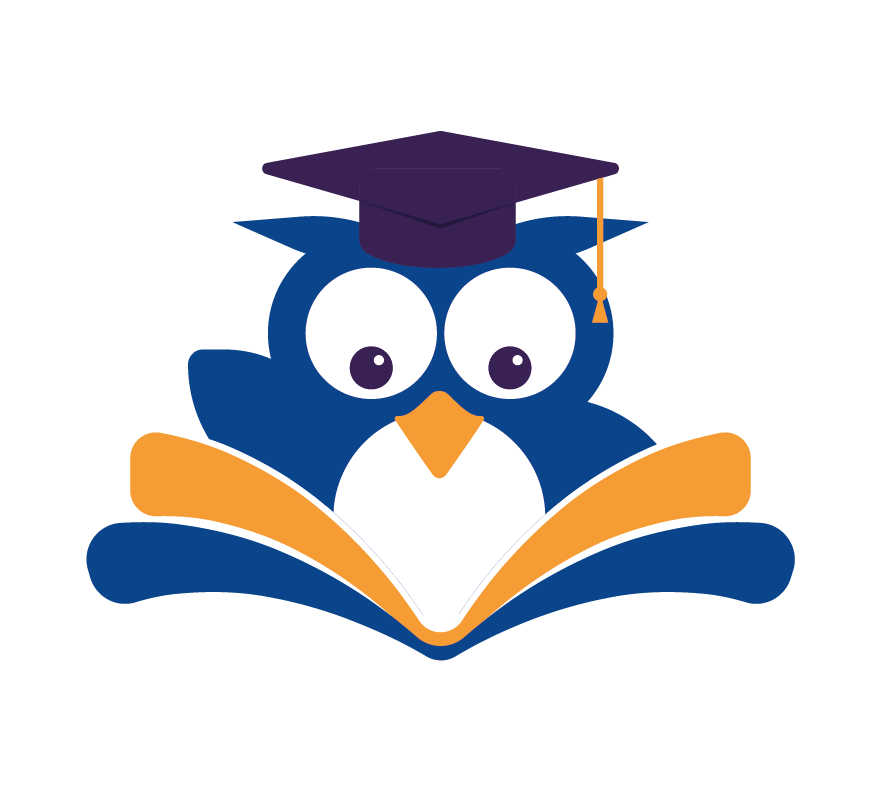Zig Ziglar once said, “If you are not willing to learn, no one can help you. If you are determined to learn, no one can stop you.” This quote shows how crucial it is to have a mind ready to learn multiple subjects. By doing so, you can reach your highest potential and accomplish amazing things.
Learning many skills and gaining knowledge in different fields can open up new perspectives. It can also deepen your understanding of the world. Whether you’re a student aiming for top grades or someone wanting to learn more, adopting a multi-disciplinary approach is very helpful.
In this article, we’ll dive into the advantages of learning across disciplines. We’ll also share useful tips on how to master multiple subjects. By the time you finish reading this guide, you’ll have the tools to reach your goals.
Key Takeaways
- Understand the importance of being open to learning multiple subjects.
- Discover the benefits of multi-disciplinary mastery.
- Learn practical strategies for mastering diverse skills.
- Enhance your understanding of the world through varied knowledge.
- Achieve your academic or personal goals with effective learning techniques.
The Power of Multi-Disciplinary Learning
In today’s fast-paced world, learning across many disciplines is more valuable than ever. As we explore different fields, we find the benefits of diverse expertise. By broaden[ing] our horizons and expanding our learning, we gain a deeper understanding of complex issues. This helps us adapt better in new situations.
Why Diverse Knowledge Is Crucial in Today’s World
Having a wide range of knowledge is key to success in many areas. With so much information available and a competitive job market, connecting different subjects is a big plus. For example, knowing different cultures and languages helps us communicate better with people from various backgrounds.
| Benefits of Multi-Disciplinary Learning | Description |
|---|---|
| Enhanced Creativity | Combining knowledge from different fields can lead to innovative solutions. |
| Improved Adaptability | Being able to adapt to new situations and challenges by drawing from a wide range of knowledge. |
| Better Problem-Solving | Approaching problems from multiple angles leads to more effective solutions. |
Cognitive Benefits of Learning Across Disciplines
Learning across disciplines not only widens your knowledge but also boosts your brain. It can improve your memory, critical thinking, and creativity. By learning different subjects, you build cognitive reserve, which protects against brain decline.
How Polymaths Succeed in the Modern Economy
Polymaths, those with knowledge in many areas, are highly sought after today. They can link unrelated concepts and solve complex problems in new ways. By embracing learning across disciplines, you become a versatile and valuable professional.
As we delve deeper into the power of multi-disciplinary learning, it’s clear that expand[ing] our learning unlocks our full potential. By embracing diverse knowledge and cognitive benefits, we become more effective learners and professionals.
Assessing Your Learning Style and Capacity
Knowing how you learn best is key to mastering many subjects. Before diving into learning new skills in different areas, you must figure out your learning style and how much you can handle.
Identifying Your Dominant Learning Style
Everyone learns in their own way. You might be a visual, auditory, reading/writing, or kinesthetic learner. Knowing your style helps you study better by using your strengths.
Visual, Auditory, Reading/Writing, and Kinesthetic Preferences
Visual learners do well with diagrams and videos. If you’re visual, using these in your studies can really help. Auditory learners like listening to lectures. Reading/writing learners take detailed notes. Kinesthetic learners do best with hands-on activities.
Customizing Study Methods to Your Style
After figuring out your style, you can tailor your study methods. For example, if you’re an auditory learner, listen to podcasts or audiobooks. Matching your study methods to your learning style helps you get knowledge faster.
Determining Your Optimal Study Load
Knowing how much you can study at once is as important as knowing your learning style. It’s about finding out how many subjects you can handle without losing focus.
Think about your past study experiences. How many subjects did you manage well? What challenges did you face? Reflecting on this helps you set a study load that fits your capacity.
Setting Realistic Expectations and Goals
With your learning style and study capacity in mind, you can set realistic goals. Break down big goals into smaller, easier ones. This makes your goals more reachable and keeps you motivated.
By following these steps, you’ll create a learning plan that uses your strengths and fits your learning capacity. This way, you can learn new skills with confidence.
Strategic Subject Selection for Maximum Synergy
Choosing the right subjects is key to gaining diverse expertise and becoming more proficient. Learning multiple subjects isn’t just about knowing more. It’s about making connections that deepen your understanding.
Complementary vs. Contrasting Subjects
Subjects that complement each other can reinforce your learning by showing common themes and methods. For example, studying mathematics and physics together can deepen your grasp of both. On the other hand, learning contrasting subjects can boost creativity and give you a well-rounded education by introducing different viewpoints.
Balancing Passion Projects with Practical Skills
Finding a balance between subjects you love and those with practical skills is crucial. Loving what you learn makes it more fun, but practical skills can open doors in your career. For instance, combining creative writing with data analysis can make you more versatile in your field.
Creating a Subject Ecosystem That Reinforces Learning
Choosing subjects that work well together can create a learning environment that supports you. This means picking subjects with shared concepts or methods. This way, you can strengthen your understanding across different fields.
Case Study: Combining Arts and Sciences
Pairing arts and sciences might seem odd, but it can spark creativity and problem-solving. For example, knowing the science behind art materials can improve your creative work.
Example Subject Combinations That Work Well Together
- Programming and graphic design for a career in UI/UX
- History and political science for a deeper understanding of social structures
- Biology and chemistry for a comprehensive understanding of life sciences
By carefully choosing your subjects, you can build a learning path that expands your knowledge and increases your proficiency in various areas.
How to Master Multiple Subjects Effectively
Mastering multiple subjects means knowing how to mix different materials, use spaced repetition, and share ideas between subjects. These strategies help deepen your understanding and improve retention across various subjects.
The Interleaving Technique for Varied Learning
The interleaving technique mixes different subjects to deepen understanding and improve retention. Instead of focusing on one subject at a time, you switch between them. This creates a varied learning experience.
For example, studying both math and language might involve solving math problems in the morning, reading literature in the afternoon, and then returning to math in the evening. This approach keeps your mind active and helps you connect different subjects.
Benefits of Interleaving:
- Improved problem-solving skills
- Enhanced ability to differentiate between various types of information
- Better retention of material over time
Implementing Spaced Repetition Systems
Spaced repetition reviews material at longer intervals to solidify it in your memory. It optimizes study sessions and reduces relearning time.
Use flashcards or apps to space out your reviews. For example, review a concept one day, then a week later, and finally after a month. This prevents forgetting and ensures long-term retention.
“Spaced repetition is a very effective way to learn because it counteracts the forgetting curve.”
Cross-Pollination of Ideas Between Disciplines
Cross-pollination takes ideas from one discipline and applies them to another. This leads to new insights and a deeper understanding of both subjects.
Finding Universal Principles Across Subjects
Many subjects share universal principles. For example, causality is important in both physics and philosophy. Identifying these principles helps develop a more integrated understanding of different subjects.
| Universal Principle | Application in Different Subjects |
|---|---|
| Causality | Physics: Understanding cause and effect in physical systems; Philosophy: Examining the nature of causality and its implications |
| Pattern Recognition | Mathematics: Identifying patterns in numbers and structures; Language: Recognizing patterns in grammar and syntax |
Building Transferable Mental Models
Mental models are frameworks for understanding complex systems. Building transferable mental models allows you to apply knowledge across different subjects and contexts.
For instance, understanding entropy can apply to physics, information theory, and decision-making in complex systems.

By using the interleaving technique, spaced repetition, and cross-pollination, you can master multiple subjects effectively. This approach enhances your understanding, helps you learn new skills, and supports your academic and professional goals.
Time Management Strategies for Multi-Subject Mastery
To expand your learning and increase proficiency in many subjects, you need a good time management plan. Mastering several subjects is tough but rewarding. Good time management is key to success.
Time Blocking Different Subjects Throughout Your Week
Time blocking is a great way to manage study time. It means setting aside specific times for each subject. This helps you:
- Focus on one subject without distractions
- Make good progress in each subject
- Avoid confusion from switching subjects too often
Modified Pomodoro Technique for Subject Rotation
The Pomodoro Technique is also useful for study time management. It involves working in 25-minute focused sessions, then taking a 5-minute break. For subject rotation, you can:
- Use a series of Pomodoro sessions for one subject
- Switch to a different subject after a longer break (e.g., 15-30 minutes)
- Keep repeating this cycle in your study session
Creating a Sustainable Long-Term Study Schedule
A good study schedule is vital for learning many subjects. To make a lasting schedule, think about these points:
Daily, Weekly, and Monthly Planning Templates
Use planning templates to organize your study time. These templates help you:
- Set achievable goals for daily, weekly, and monthly study
- Keep track of your progress and adjust your schedule when needed
- Make sure you have time for both deep study and covering many topics
Balancing Depth and Breadth in Your Schedule
It’s important to balance deep study in one subject with learning many topics. To do this, you can:
- Set aside times for deep study
- Have regular review sessions to reinforce what you’ve learned
- Change your schedule as needed for new subjects or goals
By using these time management strategies, you can expand your learning and increase proficiency in many subjects. This will help you become a well-rounded learner.
Memory Techniques to Retain Knowledge Across Disciplines
Learning multiple subjects requires effective memory techniques. These techniques help you remember information from different areas. We’ll look at powerful methods to master various subjects and broaden your horizons.
Building Subject-Specific Memory Palaces
A memory palace is a tool to remember information. It uses a familiar place and links it to what you want to remember. Choose a different place for each subject, like your childhood home for history or your workplace for science.
Make vivid mental images that connect the information to the location. This helps you remember better.
Specialized Mnemonic Systems for Different Types of Information
Each type of information needs its own memory strategy. Acronyms are good for lists, while rhymes help with rules. Visual association creates mental images to remember information.
Try different techniques to find what works best for you and the information you’re learning.
Connecting New Knowledge to Existing Mental Frameworks
Linking new knowledge to what you already know helps you remember. This process, called assimilation, makes recalling information easier. Look for connections between new and existing knowledge.
Ask yourself how the new information relates to what you already know. This helps you understand and remember better.
The Method of Loci for Multiple Subjects
The method of loci is great for learning multiple subjects. It organizes information in a way you can easily remember. Use different locations for each subject, like a journey through a familiar place.
This keeps your knowledge organized and accessible. It makes studying more efficient.
Visual Association Techniques
Visual association creates mental images to link new information to something memorable. It’s helpful for complex concepts. Associate a difficult concept with a memorable event or image.

Using these memory techniques can greatly improve your ability to remember information across disciplines. The goal is not just to gather knowledge but to recall and apply it. With practice, you can become a Renaissance learner, mastering multiple subjects and enhancing your understanding of the world.
Technology Tools for Learning Multiple Subjects
Advanced educational technology makes learning multiple subjects easier than before. It’s key to use the right digital tools to improve our learning journey.
Digital Note-Taking Systems That Connect Ideas
Good note-taking is vital when studying many subjects. Tools like Evernote and OneNote let you keep notes on different devices. This makes reviewing and linking ideas between subjects simpler.
Building a Personal Knowledge Management System
A personal knowledge management system helps organize and review your notes. Using tags, notebooks, and stacks, you can build a system for easy note access.
Tools for Creating Knowledge Graphs
Knowledge graphs visually show how different pieces of information are connected. Roam Research and Obsidian help you create networks of notes. This improves your grasp of complex subjects.
Spaced Repetition Apps and How to Use Them
Spaced repetition helps keep information in your memory. Apps like Anki use smart algorithms to review material at the right time. This prevents forgetting.
To use spaced repetition apps well, make quality flashcards and stick to a review schedule. Remember, “The key to learning is not just memorizing, but understanding the context and making connections.”
Online Learning Platforms for Diverse Subject Matter
Online learning platforms have changed how we learn new skills and knowledge. Sites like Coursera, edX, and Udemy offer courses in many subjects. You can learn at your own speed.
“The beautiful thing about learning is that nobody can take it away from you.” – B.B. King
AI-Assisted Learning Tools
AI tools are making learning more personalized. Tools like Duolingo for languages and Photomath for math adapt to your learning style and speed.
By using these technology tools, you can greatly improve your learning. You can learn new skills, gain knowledge, and expand your learning across many subjects.
Overcoming Common Challenges When Mastering Multiple Subjects
Learning multiple subjects comes with its own set of challenges. But don’t worry, we’re here to help. You’ll face obstacles as you study different areas. We’ll share strategies to help you overcome these hurdles and stay focused.
Dealing with Information Overload
Learning many subjects can feel overwhelming. To tackle this, prioritize your study materials and focus on the most important topics first. Using digital tools to organize your notes can also help you keep track of your progress.
- Identify key concepts in each subject
- Create a study schedule to manage your time effectively
- Use apps or software to organize your notes and materials
Maintaining Motivation Across Different Fields
Staying motivated is key when studying multiple subjects. To keep your enthusiasm up, set achievable goals for each subject and reward yourself when you meet them. Joining study groups or finding a study buddy can also help.
Preventing Burnout While Pursuing Multiple Interests
Burnout is common when studying many subjects. To avoid it, take regular breaks and make time to relax. Also, diversify your study activities to keep things interesting.
Handling the Plateau Effect in Learning
Sometimes, you might feel like you’re not making progress, known as the plateau effect. To get past this, adjust your learning strategy. Here are some tips:
When to Push Through vs. When to Switch Subjects
Knowing when to keep going and when to change your approach is crucial. If you’re stuck, try a new study method or get help from a tutor.
Creating Accountability Systems
Having someone to report to can motivate you. You can create a study plan and share it with a friend or mentor. Ask them to check in with you regularly.
Conclusion: Your Journey to Becoming a Renaissance Learner
As you finish reading this guide, we hope you’re inspired to start your journey to becoming a Renaissance learner. Learning many subjects can open up new worlds for you. It lets you understand the world in a deeper way.
By using the strategies and techniques we talked about, you’re on your way to mastering many subjects. This is a big step towards becoming a true Renaissance learner.
To succeed, stay motivated and be open to new things. Always keep learning. This mindset is key to reaching your full potential.
Exploring different subjects can be very rewarding. It brings joy and new insights into your life. We encourage you to dive into various fields and enjoy the learning journey.
Your path to becoming a Renaissance learner is unique. We’re excited to see where it will lead you. With hard work and dedication, you’ll master many subjects and enjoy the benefits that come with it.

